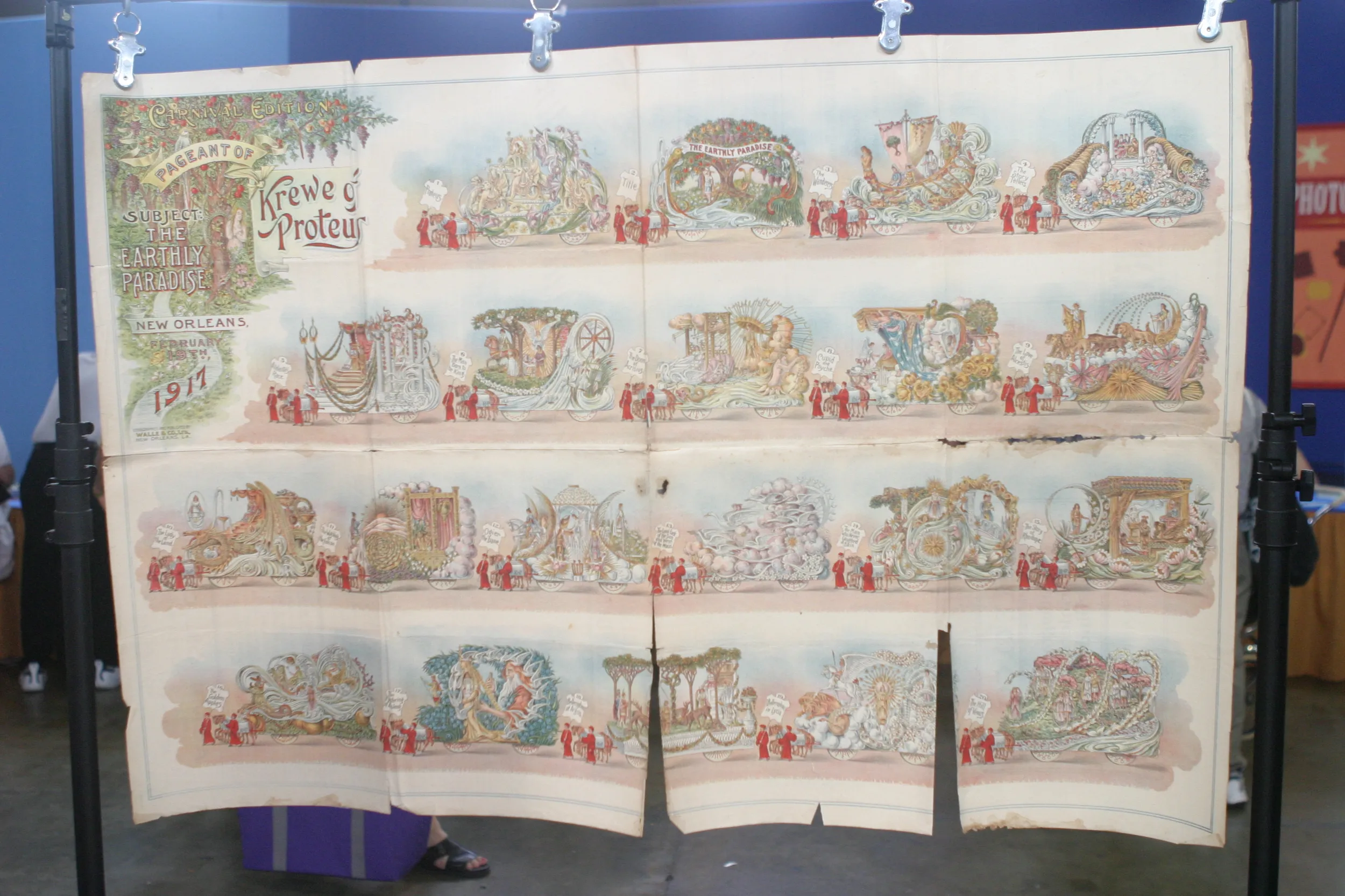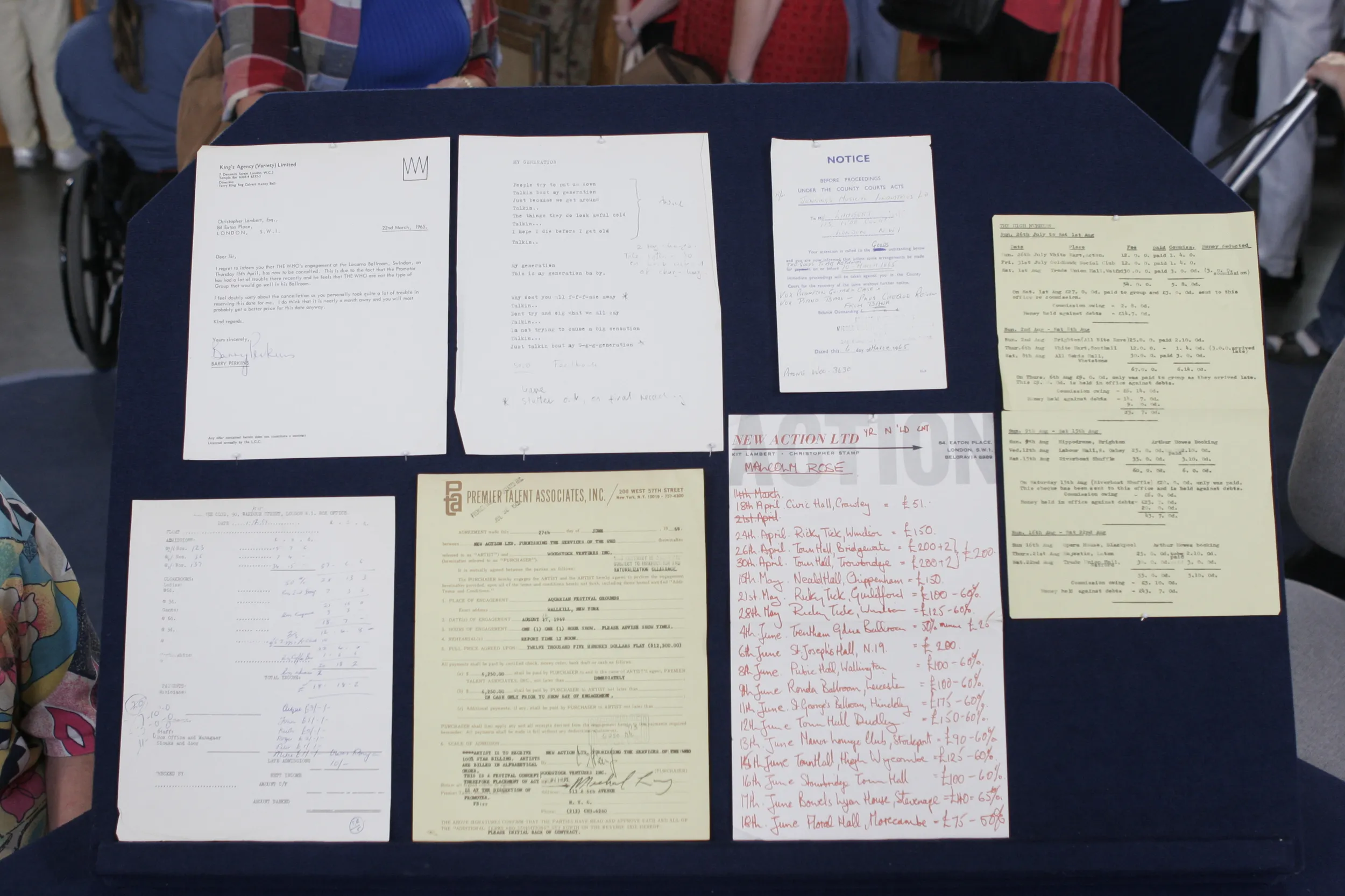Titanic Survivor Photograph & Book
GUEST: My great-uncle Albert Caldwell was a survivor of the Titanic along with his wife, Sylvia, and their little boy Alden, their infant baby. When uncle Al died in 1977, he left behind a photograph of Sylvia and himself and the baby on the deck of the Titanic, which came to my mother and then came to me. And that's what I brought today, as well as a booklet that Sylvia wrote in 1912 called Women of the Titanic Disaster, where she essentially eavesdropped on the surviving women of the Titanic on the rescue ship Carpathia and told their stories and their worries for the future. And those are two of our family treasures.
APPRAISER: Now, tell me about some of the recollections he had of the rescue.
GUEST: He and Sylvia were on lifeboat 13, along with the baby, and they weren't going to get on the lifeboat. They thought it was more like a drill. They had stepped through a water-tight door that was still open, and they felt like the captain didn't think it was enough of an emergency to have shut the water-tight door. So they were just waiting for the "all clear" to go back to their cabin when they ran into a stoker on the deck. These were the men from the furnace who shoveled the coal into the fire, which generated the steam. Uncle Al had taken a tour of the ship earlier just as a tourist, and while he was in the engine room, he had handed his camera to this stoker and said, "Take my photograph," which the man did, and they exchanged names. And this was his first lucky break, because the stoker ran into him on the night of the sinking on the deck and said, "Mr. Caldwell, if you value your life, get off this ship! I've been below, and the hold is filling up with water and this ship will go down." And that's what made them decide this was more serious than a drill.
APPRAISER: And then lifeboat 13 had some problems.
GUEST: They did. They ran and got on lifeboat 13 following the stokers, and at first, Uncle Al was hanging back because even though men were on the lifeboat, he felt the women should get on first. But another lucky break was that he was holding the baby and his wife looked visibly ill. An officer had been helping them earlier and saw them and said to Uncle Al, "Get on the lifeboat and hold the baby." When they got to the water line, they found they were behind a pump throwing water out of the Titanic, and they all got drenched. Sylvia said it was a miracle they didn't so much as catch cold. So they untied the oars and propelled themselves backwards and found themselves under lifeboat 15. They tried to pull a lever to release themselves from the side of the ship and discovered that it didn't work. And so there they were, with 15 coming closer and closer and threatening to crush them, and finally when the men on 13, standing on their seats of 13, were able to pound on the bottom of 15, 15 got the message and quit lowering. In any case, the stokers used a knife to cut them free.
APPRAISER: That's correct, and they were just able to release seconds before lifeboat 15 dropped down. And here we have the book that Sylvia wrote, and dated 1912.
GUEST: Yes, and it's very touching. It starts with her rocking her baby probably about August of 1912 and commenting that the little life was spared to her, but so many women lost everything-- their children, their husbands-- and of course, most of them weren't educated and couldn't make a good livelihood.
APPRAISER: And then above that, we have the photo here of your great-uncle, his wife, and their child on the deck of the Titanic.
GUEST: Yes.
APPRAISER: And because the Titanic sunk on its maiden voyage, there's very few original images.
GUEST: There are, and the only reason they had this was because a friend accompanied them to the ship to see them off, so he took the photograph on his camera and sent it to them later.
APPRAISER: And then we have the letter from Titanic historian Walter Lord.
GUEST: Walter Lord authenticated this picture for me. I sent him a Xerox back in the '80s, and he was thrilled. He said he had never seen it before and that he could tell it was the Titanic even just based on the two ships behind in the photograph.
APPRAISER: My favorite part of the letter is he said, "The snapshot you enclosed is a gem. “I have never seen it before and it was certainly taken on board the Titanic." We've discussed this at the table, and certainly they're very rare items. The Women of the Titanic Disaster, there's perhaps a handful of those we found in existence. Any original photos from the Titanic, there's a handful or so known to exist. We discussed at the table and for insurance purposes, we have placed a value on this group at $7,500.
GUEST: (laughs) That's great. Well, they're priceless to me, so yeah, that's good to hear. Thank you.
GUEST: My great-uncle Albert Caldwell was a survivor of the Titanic along with his wife, Sylvia, and their little boy Alden, their infant baby. When uncle Al died in 1977, he left behind a photograph of Sylvia and himself and the baby on the deck of the Titanic, which came to my mother and then came to me. And that's what I brought today, as well as a booklet that Sylvia wrote in 1912 called Women of the Titanic Disaster, where she essentially eavesdropped on the surviving women of the Titanic on the rescue ship Carpathia and told their stories and their worries for the future. And those are two of our family treasures.
APPRAISER: Now, tell me about some of the recollections he had of the rescue.
GUEST: He and Sylvia were on lifeboat 13, along with the baby, and they weren't going to get on the lifeboat. They thought it was more like a drill. They had stepped through a water-tight door that was still open, and they felt like the captain didn't think it was enough of an emergency to have shut the water-tight door. So they were just waiting for the "all clear" to go back to their cabin when they ran into a stoker on the deck. These were the men from the furnace who shoveled the coal into the fire, which generated the steam. Uncle Al had taken a tour of the ship earlier just as a tourist, and while he was in the engine room, he had handed his camera to this stoker and said, "Take my photograph," which the man did, and they exchanged names. And this was his first lucky break, because the stoker ran into him on the night of the sinking on the deck and said, "Mr. Caldwell, if you value your life, get off this ship! I've been below, and the hold is filling up with water and this ship will go down." And that's what made them decide this was more serious than a drill.
APPRAISER: And then lifeboat 13 had some problems.
GUEST: They did. They ran and got on lifeboat 13 following the stokers, and at first, Uncle Al was hanging back because even though men were on the lifeboat, he felt the women should get on first. But another lucky break was that he was holding the baby and his wife looked visibly ill. An officer had been helping them earlier and saw them and said to Uncle Al, "Get on the lifeboat and hold the baby." When they got to the water line, they found they were behind a pump throwing water out of the Titanic, and they all got drenched. Sylvia said it was a miracle they didn't so much as catch cold. So they untied the oars and propelled themselves backwards and found themselves under lifeboat 15. They tried to pull a lever to release themselves from the side of the ship and discovered that it didn't work. And so there they were, with 15 coming closer and closer and threatening to crush them, and finally when the men on 13, standing on their seats of 13, were able to pound on the bottom of 15, 15 got the message and quit lowering. In any case, the stokers used a knife to cut them free.
APPRAISER: That's correct, and they were just able to release seconds before lifeboat 15 dropped down. And here we have the book that Sylvia wrote, and dated 1912.
GUEST: Yes, and it's very touching. It starts with her rocking her baby probably about August of 1912 and commenting that the little life was spared to her, but so many women lost everything-- their children, their husbands-- and of course, most of them weren't educated and couldn't make a good livelihood.
APPRAISER: And then above that, we have the photo here of your great-uncle, his wife, and their child on the deck of the Titanic.
GUEST: Yes.
APPRAISER: And because the Titanic sunk on its maiden voyage, there's very few original images.
GUEST: There are, and the only reason they had this was because a friend accompanied them to the ship to see them off, so he took the photograph on his camera and sent it to them later.
APPRAISER: And then we have the letter from Titanic historian Walter Lord.
GUEST: Walter Lord authenticated this picture for me. I sent him a Xerox back in the '80s, and he was thrilled. He said he had never seen it before and that he could tell it was the Titanic even just based on the two ships behind in the photograph.
APPRAISER: My favorite part of the letter is he said, "The snapshot you enclosed is a gem. “I have never seen it before and it was certainly taken on board the Titanic." We've discussed this at the table, and certainly they're very rare items. The Women of the Titanic Disaster, there's perhaps a handful of those we found in existence. Any original photos from the Titanic, there's a handful or so known to exist. We discussed at the table and for insurance purposes, we have placed a value on this group at $7,500.
GUEST: (laughs) That's great. Well, they're priceless to me, so yeah, that's good to hear. Thank you.

$7,500 Insurance
Birmingham, AL (2014)
Featured In

episode
Birmingham, Hour 3 (2015)
Host Mark L. Walberg and appraiser John Buxton visit the Birmingham Museum of Art
Paper and Cardboard

appraisal

appraisal

appraisal

appraisal
Understanding Our Appraisals
Placeholder





